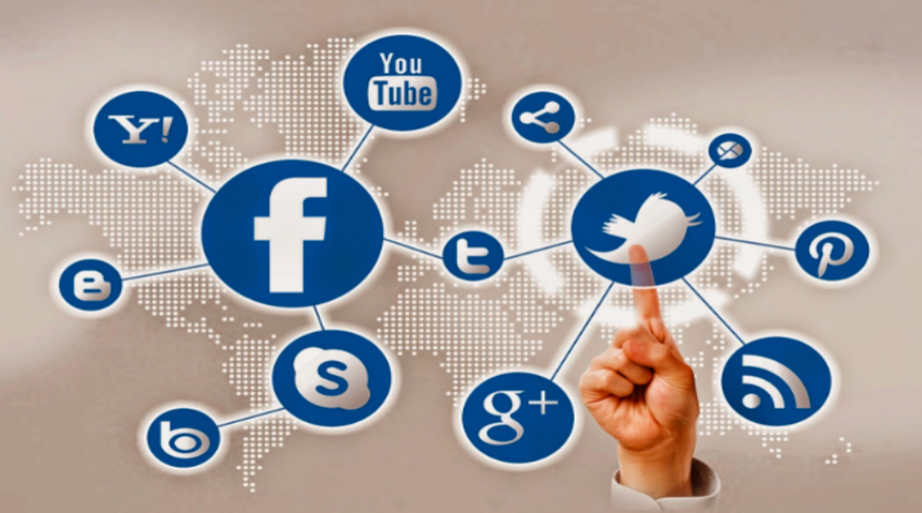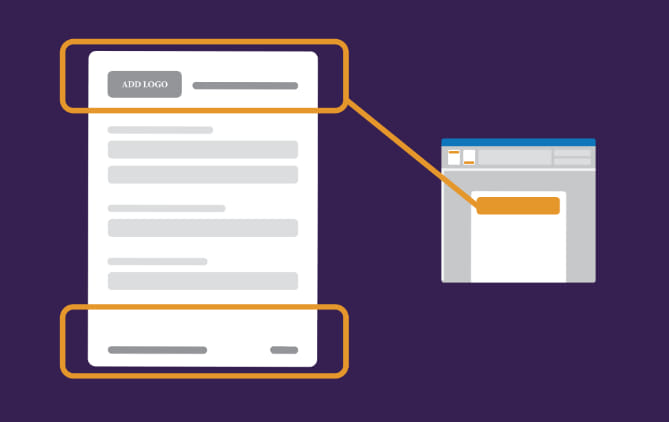Email marketing can be a powerful tool for connecting with customers and prospects. But with so many emails flooding inboxes every day, it’s critical to make each one count. That’s where optimizing your email headers and footers comes in.
When done right, headers and footers act as bookends that enhance your main email content. They help reinforce your brand, promote engagement, and drive readers to take action. This guide will explore tips to upgrade these small but mighty email components. Let’s dive in!
Why Email Headers and Footers Matter
At first glance, headers and footers may seem like minor details. But they serve important functions:
Branding – Headers consistently display your brand name and logo. This builds familiarity and trust with subscribers. Footers reinforce branding and credibility by including company info, addresses, and links.
Engagement – Call-to-actions in headers and footers encourage subscribers to take next steps like visiting your site, making a purchase, or contacting you.
Analytics – Tracking pixels in footers enable you to monitor opens, clicks, unsubscribes, and other metrics. This provides valuable data to improve campaigns.
Compliance – Footers allow you to clearly display required information like mailing addresses, unsubscribe links, and privacy policies.
Given their strategic value, it’s essential to use headers and footers effectively at email marketing company. A few small optimizations can make a big difference.
Guide To Get More Value From Your Email Headers And Footers
Now that you know the exact role of email headers and footers, let us discuss how you can maximize their benefits while ensuring that they charm your recipients.
Optimize Branding in Headers
Your header appears at the top of every email and post in a campaign. This prime placement means it has to instantly communicate your brand.
Include Logo and Style Elements
Your logo is a vital brand asset that should appear prominently in headers. For versatility, have both horizontal and vertical logo versions.
Email headers also allow you to establish visual brand identity through color schemes, font choices, and other stylistic flourishes.
Display a Clear Sender Name
Headers must clearly show the sending organization’s name. Using your company name builds familiarity. Utilizing a specific brand name or publication title establishes authority around a niche.
Limit Header Length
Long headers push content down, requiring more scrolling. Keep headers compact. On mobile, they display even smaller, so brands and titles should be short and recognizable.
Be Consistent Across Campaigns
Using the same header style across campaigns strengthens brand recognition. Subscribers will instantly know an email comes from you.
Maintaining consistency also builds trust and professionalism.
Increase Engagement with Strategic Footers
While headers capture attention up front, footers make final impressions. Use them to spur subscribers to action.
Include Call-To-Action Buttons
Call-to-action (CTA) buttons are one of the most effective tools for email engagement.
Strategically place them in footers to capture attention after subscribers have consumed content. Useful CTAs include:
- Visit our website
- Start free trial
- Learn more
- Shop now
- Contact us
Keep CTA wording short and action-oriented. Use contrasting colors to make them stand out.
Drive Traffic to Key Pages
In addition to CTA buttons, include text links in footers to guide traffic to key pages on your site. Useful options include:
- Homepage
- Product/service pages
- Pricing or account pages
- Contact or support pages
- Blog or resources
Links should describe the destination and use relevant anchor text for SEO.
Promote Social Media Profiles

Add social media follow links to your footer to expand reach. Platform icons are highly recognizable.
Prioritize networks where you have an active presence and larger followings.
Spotlight Email Signup
If you have a blog or extensive website content, add a footer signup form allowing visitors to subscribe to your email list. This moves them down the conversion funnel.
Provide Customer Service Shortcuts
Links to self-help resources or your contact page allow subscribers to quickly get assistance. This prevents frustration and win-backs customers.
Craft Compliant and Professional Footers
Beyond engagement, footers must contain certain elements to comply with laws, regulations, and best practices.
Include Postal Address
A physical mailing address establishes you as a legitimate business. It also enables subscribers to send comments or inquiries by post if needed.
Link Clear Unsubscribe Option
Email laws require easy one-click unsubscribes. Link phrases like “Unsubscribe here” or “Click here to unsubscribe” in footers to quickly opt-out.
Display Required Legal Statements
Certain industries have required disclaimers or disclosures in footers. Financial services may need liability statements. Commercial emails often warrant CAN-SPAM compliance.
Link Full Privacy Policy
Linking your privacy policy, even saying “Our Privacy Policy”, reassures subscribers their data is protected. Maintain a clear, detailed policy on your site.
Share Copyright and Address Details
Including company copyright and address establishes professionalism and credibility. It also protects brand identity and deters unauthorized use.
Track Performance with Pixels
Beyond visible links and text, footers contain hidden tracking pixels that provide intelligence.
Install Open Tracking Pixels
These invisible pixels detect when an email is opened, telling you how many subscribers engaged with content.
Add Click Tracking Pixels
These track clicks on footer links and CTA buttons, quantifying engagement and interest.
Implement Unsubscribe Pixels
These pixels log unsubscribes so you can identify issues driving opt-outs and improve relevance.
Consider Automation Pixels
Automation pixels activate things like workflows or customized follow-up based on recipient actions like opens or clicks.
Utilize email analytics to gain actionable insights from these pixels. Continuously improve your campaigns.
Optimize Headers and Footers for Mobile

With email reading shifting to mobile, headers and footers need mobile optimization.
Use Single-Column Layouts
Stacking elements in a single column avoids cramming tiny text across skinny screens.
Link Logo to Mobile Homepage
Having your logo link to a mobile-friendly homepage keeps navigation easy.
Prioritize Valuable Links and CTAs
Cut superfluous links to spotlight only your most relevant pages and calls-to-action for mobile.
Check Links Work on All Devices
Test header and footer links from phones, tablets, and desktops. Fix any that don’t function properly.
With thoughtful mobile optimizations, your headers and footers will work across all devices.
Refresh Stale Headers and Footers
Don’t just “set and forget” your headers and footers. Revisit them regularly to ensure they stay effective.
Update Branding As Needed
If you refresh logos, color schemes, or messaging, roll out changes to headers and footers too.
Test and Tweak CTA Performance
Try different CTA wording and placements to see what drives most click-throughs. Adapt based on feedback data.
Check Links for Rot
Review footer links routinely to ensure none are broken, lead to dead ends, or need updating.
Reflect New Programs and Priorities
Adjust headers and footers to spotlight new initiatives like content offerings, promotions, or partnerships.
Keeping headers and footers current ensures maximum performance over time. Don’t miss out on value from neglect.
Conclusion
Email header and footer best practices may seem minor, but these small elements can have a big impact on your marketing when optimized effectively. Use them to build consistent branding, drive engagement through strategic calls-to-action, gain subscriber insights, and comply with requirements. Harness headers and footers, and your email campaigns will reap serious benefits.
Frequently Asked Questions
What are some effective calls-to-action to include in email headers and footers?
Some great CTAs for headers and footers include “Shop Now”, “Read More”, “Get Your Free Guide”, “Sign Up Today”, “Attend Our Webinar”, and “Forward To A Friend”. Action-focused phrases that clearly tell readers what to do next work best.
How much text should I include in headers and footers?
Less is often more in headers and footers. Stick to 1-3 concise, scannable sentences or bullet points highlighting your main message, offer, or next step. Avoid dense paragraphs that are easy to overlook.
Should I include my mailing address in the footer?
Listing your full mailing address is recommended for building trust and providing an avenue for offline contact. However, you can omit it if space is limited and you have other contact info listed.
Where should I place my unsubscribe link?
By law, unsubscribe links must be present and easy to find. Placing them in the footer is best practice, as it keeps them visible but out of the way of your main content.
How often should I change up my header and footer design?
Branding, color scheme, and layout can remain consistent, but switching up phrasing, calls-to-action, or images 1-2 times per month can help keep engagement high. Test new options regularly.
Should I personalize headers and footers when sending one-to-one emails?
Absolutely! Using first names, customized product suggestions, and other personalized details in one-to-one email headers and footers makes them more meaningful.
What’s better: text headers or image headers?
It depends on your goals. Image headers are eye-catching, while text headers are more accessible and easier to personalize. Using both text and images can give you the best of both worlds.
Should I use the same header and footer across different email campaigns?
Using similar headers and footers strengthens branding, but tweaking them to match specific campaigns keeps each email tailored and fresh. Aim for consistency with variety.
How do I make my headers and footers mobile-friendly?
Optimize them for single column view, use a larger font size, avoid long paragraphs, and make buttons finger-friendly. Also, preview them on actual mobile devices during testing.
Author: Kevin George is the head of marketing at Email Uplers, that specializes in crafting Professional Email Templates, PSD to Email conversion, and Mailchimp Templates. Kevin loves gadgets, bikes & jazz, and he breathes email marketing. He enjoys sharing his insights and thoughts on email marketing best practices on email marketing blog.
Disclosure: The articles, guides and reviews on BlowSEO covering topics like SEO, digital marketing, technology, business, finance, streaming sites, travel and more are created by experienced professionals, marketers, developers and finance experts. Our goal is to provide helpful, in-depth, and well-researched content to our readers. You can learn more about our writers and the process we follow to create quality content by visiting our About Us and Content Creation Methodology pages.

